One of the easiest ( and tastiest ) ways to introduce science at home is in the kitchen. If you’re a regular reader, you’ve probably already seen my huge kitchen science experiment round-up post, full of simple, tasty, and educational ideas for science in the kitchen. Pancakes are a great way to learn about how changing the ingredients of a dish even slightly can impact the final product in a big way.
To get the perfect pancake for your taste, you need to get the ingredients right. If you like big fluffy pancakes, you’ll need baking powder to add bubbles. If you’re more of a crepe person, skip the baking powder.
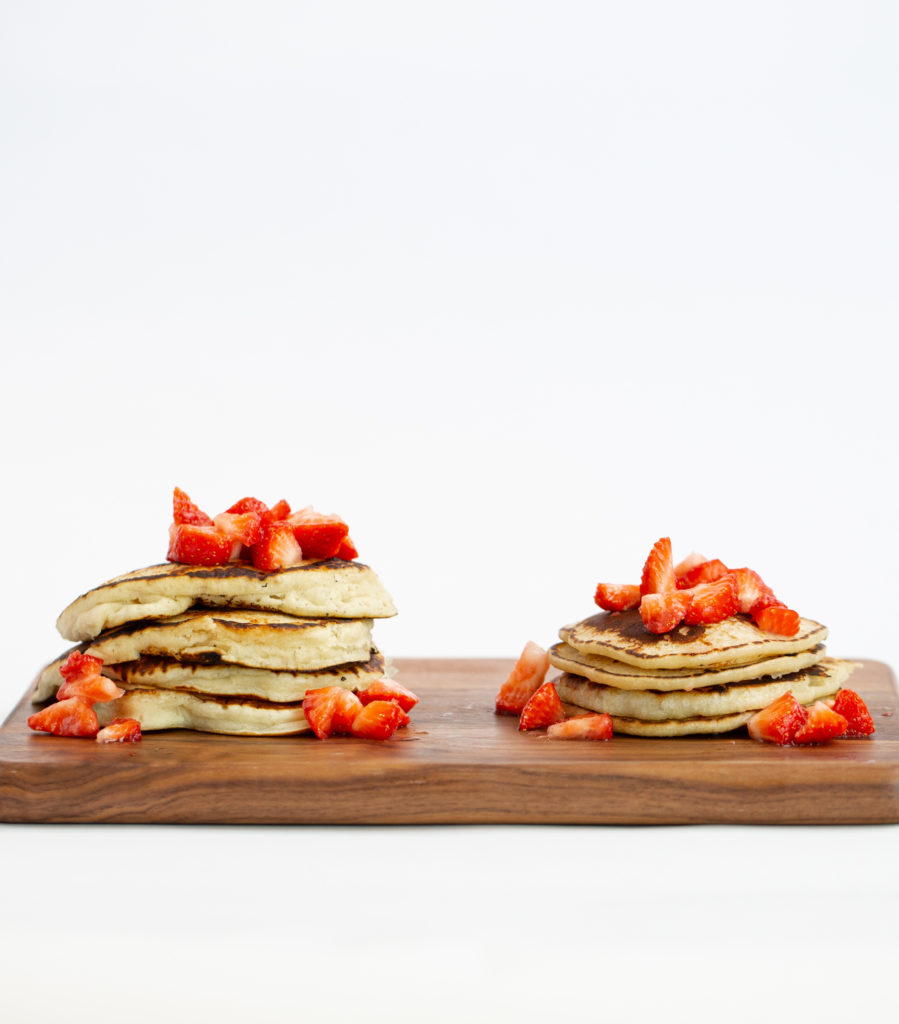
Pancake Science Experiment
What you need
We used the recipe below for the pancake batter, but you can use any mixture you want.
- Two eggs
- 300ml milk
- 100g plain flour
- Baking powder
- One tablespoon sunflower oil or butter
- Egg whites whisked
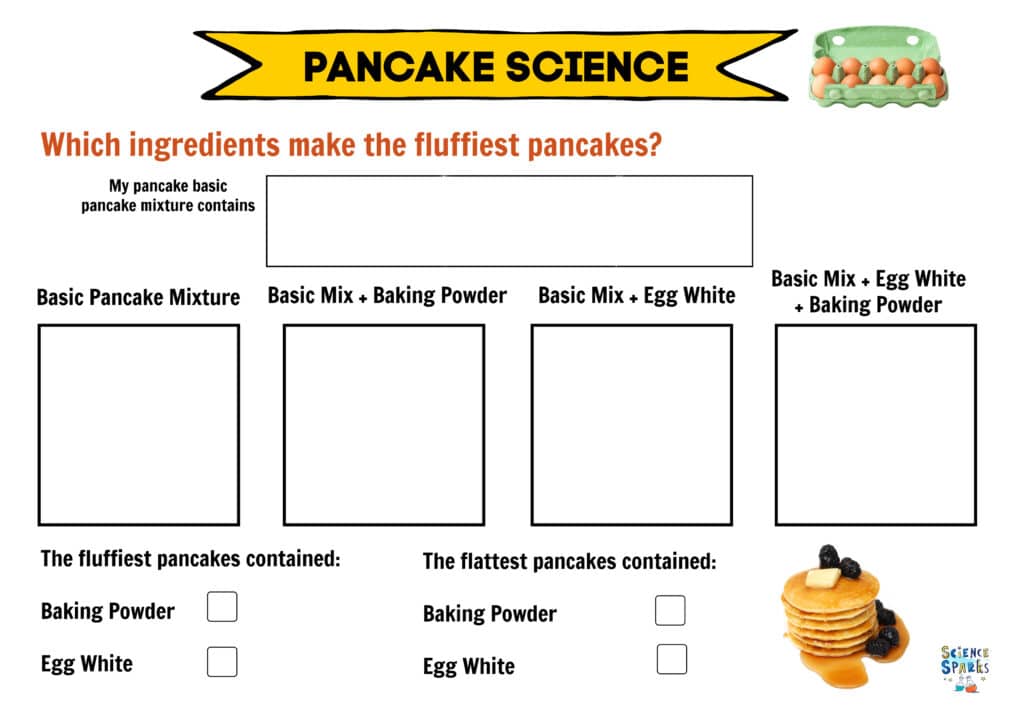
Instructions
Sift the flour and whisk the egg into it with a splash of milk. Add the oil or melted butter, and whisk in the rest of the milk.
Keep the whisked egg whites to one side.
We tested four different mixtures, but you can adjust the variations however you want, just keep the basic mix the same.
- Basic pancake mixture.
- Basic pancake mixture with a teaspoon of baking powder.
- Basic pancake mixture with some whisked egg white.
- Basic pancake mixture with baking powder and whisked egg white.
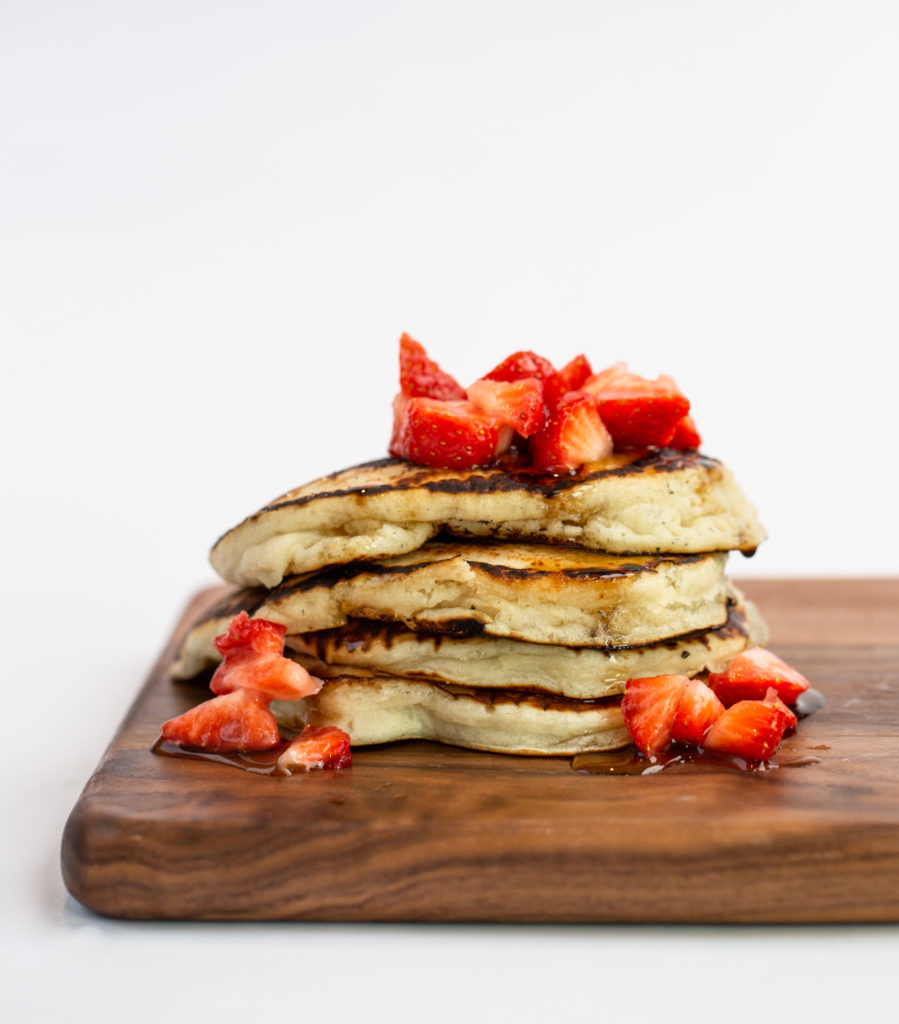
Pancake Experiment Questions
How will the baking soda and whisked egg affect the pancake?
The baking powder and egg white should add air to the mixture, giving it more volume than the basic mixture.
How would you expect the pancakes made using different mixtures to differ?
We would expect the pancakes to vary in size. The smallest should be the basic mixture, and the largest should be the mixture of baking soda and whisked egg white.
Results
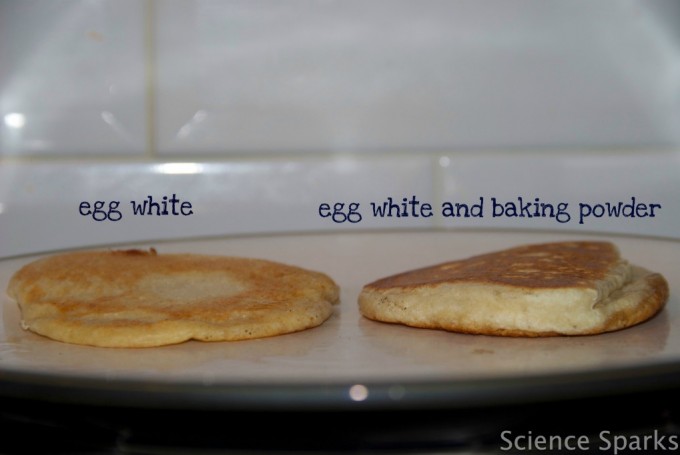
Pancake Science – the perfect pancake
Baking powder acts as a leavening agent, which means it adds bubbles of gas ( carbon dioxide ) to the dough. This chemical reaction happens when the baking powder is mixed with the moist dough.
The starch in the flour mixes with the water in the dough mixture to form a gluten matrix which then sets, leaving the holes left by the gas bubbles inside. If you don’t use baking powder in a pancake, it will be much flatter.
Baking powder is an example of a chemical leavener. An example of a biological leavener is yeast.
Egg whites are another way to add air to the pancake mixture. When whisked, the egg whites trap air, increasing their volume. When carefully mixed into the pancake mixture, the air is also added.
Did you know that citric acid (found in lemon juice) stimulates your taste buds? Try adding some to your pancake.
These photos were taken with a microscope. The air bubbles in the mixture with baking powder are clearly visible.
More pancake science experiments
Find the best syrup for your pancakes with a viscosity syrup race!
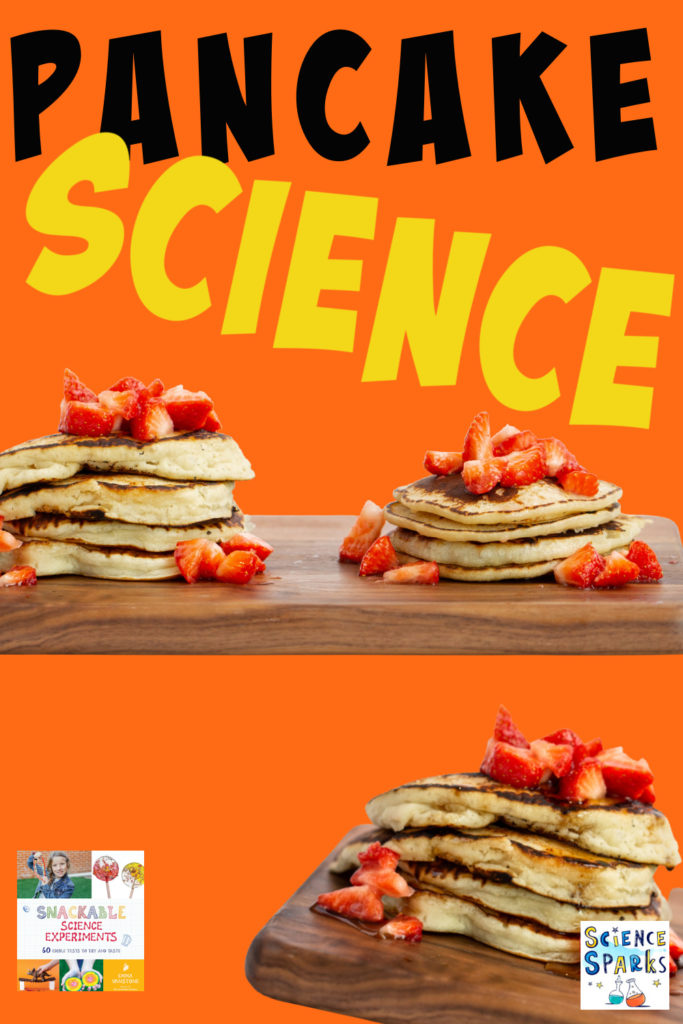
Last Updated on March 4, 2025 by Emma Vanstone

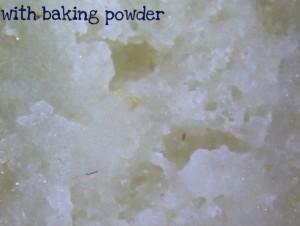
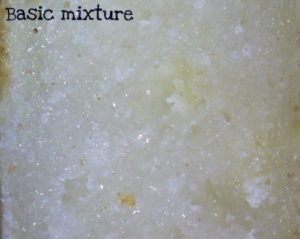
What a lovely chemistry illustration!
What a neat experiment! So timely, too, with tomorrow being Pancake Day! I have a song activity that might be appropriate for some early elementary ages. http://www.youtube.com/watch?v=ngIRIgpcfQ4
I think I’ll try with the baking powder next time, lol. Looks great.
So doing this tomorrow!
What a great way to show a young child the science of things. I have pinned this to my Science board! Thanks so much for sharing it with us at Tuesday Tots! We hope you will drop by next Tuesday, and show us what you have been up to!
Thank you. x
Brilliant! I LOVE how you managed to add science to Pancake day! And isn’t it amazing to see what the Baking Soda does?!
Thank you for sharing on Kids Get Crafty!
Maggy
Thanks Maggy x
I love this and when I return to teaching it will be yet another science experiment that I will be doing with the students bringing science into the real world 😀 (maybe it will help get more students interested in the subject again).
Thank you for linking up to Tuesday Tots
Once again, brilliant teaching – GG’s teacher actually made pancakes in her Reception class to demonstrate changing states and reversible and non-reversible changes – she was fascinated!
Wait, do I use baking soda or baking powder? They seem to be used interchangeably here but they are different, right?